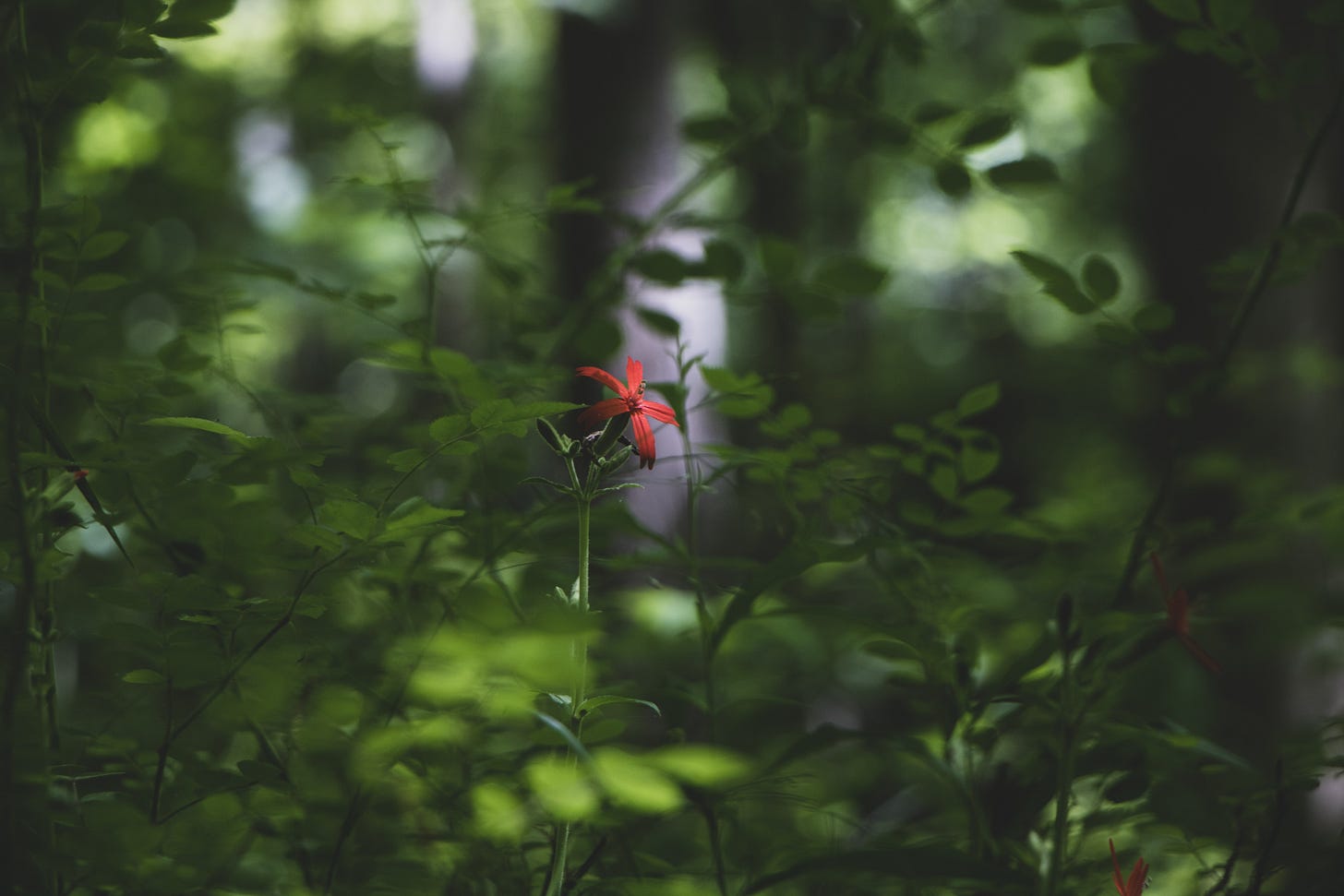The Eco-Update #8
Dispatches from the planet
A Navajo scientist is working to revive a desert peach tree
This story caught my attention at first because I didn't realize there was a type of peach tree that grows in the southwest. According to Dr. Reagan Wytsalucy, the lead researcher, Native communities have been cultivating the Southewest peach tree since the 1600s. The earliest record, from a Spanish missionary, described a scene of thousands of peach trees planted along the Rio Grande in 1630.
Dr. Wytsalucy is a member of the Navajo Nation, and is tracking down remaining Southwestern peach trees in order to study how Indigenous communities grew them in the arid climate. Her team's experiments, which test drought tolerance and population genetics, suggest that the Southwest peach was likely cultivated over time with specific focus on the ability to survive these conditions, to the extent that it now far exceeds in this ability compared to current greenhouse cultivars.
For Dr. Wytsalucy, the peach has a special cultural significance to her ancestral heritage. Her father told her stories about peaches that grew in the region historically, and urged her to study agriculture at college. It has also helped her re-connect with a type of knowledge that has been frequently dismissed by western science.
This work is, I think, a really interesting way that traditional ecological knowledge is increasingly informing and expanding what we know about the ecological, cultural and historical aspects of the environment.
Forest fires are slowing forest recovery
I'm not a fire ecologist, but I try to keep tabs on developing research in this area, because fire is increasingly a dominant disturbance in forests worldwide. Forest fires are perhaps currently the most major risk to the ability of forests to store carbon, in addition to all the other functions forests perform. That's why I found this recent paper particularly important.
The study assessed global forest fires and found that, since 2001, forests are recovering more slowly. The researchers identified over 3,000 fires between 2001 and 2021, and measured multiple recovery indicators to understand how forests are responding to large-scale fires.
From 2010 to 2021, fires caused more damage to forests and expanded from lower to higher latitudes, compared to 2001-2010. Less than 33% of forests were able to successfully recover within 7 years of a severe fire. In addition, the time required for vegetation density, canopy structure, and primary productivity to recover all increased in response to increasing fire severity.
Interestingly, fire severity had a stronger impact on recovery times than post-fire climatic conditions. Although, because climate change is making forest fires worse, forest recovery is still inextricably linked to ongoing global warming. And the problem is only getting worse, as exemplified by the current fire in the New Jersey Pine Barrens.
What the Earth’s rotation tells us about water loss
In a new study in Science, researchers have identified a change in the planet's rotation, causing a wobble of roughly 45 cm since the early 2000s. But while this may seem like a study about planetary movements, it's actually about water.
During a short period in the early 2000s, land masses lost over 1,600 GT (gigatonnes) of soil moisture, which is a lot. The water was mostly transferred to Earth's oceans, causing a shift in the balance of mass on the planet, and thus a change in its rotation.
What caused the movement of water from soil to the oceans? Climate change. As air temperature rises, the amount of moisture it can hold also increases. The difference between how much moisture is in the air, and how much the air could hold at a given temperature, is called the vapor pressure deficit. Warming increases this deficit, to the point that evaporation begins to increase, moving moisture from the soil to the atmosphere. When the air cools, the moisture then leaves the atmosphere, often over oceans.
This trend will likely have serious impacts, potentially reducing agricultural output and ecosystem functioning. What's more is that it could also produce a feedback loop, where dryer soils produce less evapotranspiration, and in turn less precipitation, ultimately making droughts more frequent and severe.



